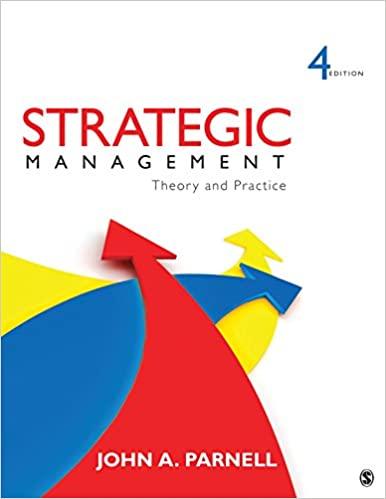Bank of America is the third-largest bank by assets in the United States behind Citigroup and JPMorgan
Question:
Bank of America is the third-largest bank by assets in the United States behind Citigroup and JPMorgan Chase. Following its 2004 acquisition of Fleet Boston, the bank boasted the most extensive branch network in the industry, encompassing over 5,700 locations and 17,000 ATMs throughout the United States. The firm’s coverage is especially strong in California, Texas, and Florida. Bank of America also owns about one-fourth of one of Mexico’s largest banks, Santander Central Hispano.
Bank of America is a diversified firm, operating in four principal business segments. The most substantial segment is consumer and commercial banking and includes traditional banking services such as deposits, loans, credit cards, and the like. Bank of America offers brokerage and related services to institutional clients within the global corporate and investment banking segment, featuring its subsidiary, Bank of America Securities. Its asset management segment primarily serves institutional investors and individual investors with substantial portfolios. The firm also purchases stakes in various businesses through its equity investment segment.
Bank of America was established in 1874 as Commercial National Bank, later to become American Trust Company, American Commercial Bank, and finally North Carolina National Bank (NCNB) in 1960. Following its expansion outside of North Carolina, NCNB renamed itself NationsBank in 1991. Acquisitions continued throughout the 1990s. The firm acquired Chicago Research & Trading in 1993, Boatmen’s Bancshares in 1997, and Barnett Banks in 1998. Following a merger with BankAmerica in 1998, the new company was renamed Bank of America.
In the early 2000s, however, emphasis shifted from external to internal growth. Today, Bank of America is aggressively expanding its number of branches, locating in retail establishments such as Wal-Mart and Starbucks. The firm’s advertising campaigns emphasize highly full service, convenience, and accessibility. Bank of America is expanding its branch network and is aggressively targeting consumer deposits, supported by about $150 million on advertising.
In September 2003, a New York attorney general’s investigation into illegal after-hours trading implicated Bank of America’s Nations Funds. In 2004, the company spent tens of millions of dollars in fines and repayments to settle with investors who may have lost money because of the improprieties.
In the mid-2000s, Bank of America shifted its attention once again to external growth, acquiring broker-dealer Fleet Securities for $48 billion in 2004 and MBNA, the largest affinity credit card issuer in the United States for $35 billion in 2005. In 2006, it purchased a 9% stake in China Construction Bank and a 5% stake in General Motors (GM). While its global footprint continues to expand, Bank of America operates about 5,700 locations in the United States.
Bank of America suffered substantial losses as a result of the 2008 financial crisis but also embarked on some opportunistic acquisitions, including troubled mortgage lender Countrywide and investment bank Merrill Lynch in 2009. Adding Countrywide made Bank of America the largest residential mortgage lender in the United States, but the acquisition posed challenges as well. Because Countrywide was a major player in the subprime loan crisis, the company was renamed Bank of America Home Loans.
Case Challenges
1. Was Bank of America managed effectively during the financial crisis? Defend your response.
2. Although Bank of America’s size offers a number of scale economies, is the firm vulnerable to smaller banks that offer a high degree of personal service?
3. In 2007, Bank of America decided to offer credit cards to individuals without social security cards, a group that is comprised primarily of illegal immigrants.
Has this turned out to be a wise strategic move? Why or why not?
Step by Step Answer:






